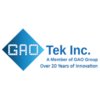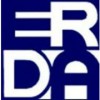Filter interviews by
Amphenol Interconnect Injection Moulding Machine Operator Interview Questions and Answers
Amphenol Interconnect Injection Moulding Machine Operator Interview Experiences
1 interview found
Interview Questionnaire
4 Questions
- Q1. Difference in nylon 6 and 66 , learn all theory and technical especially knowledge about specialised and engineering materials,
- Q2. Learn about small moulds
- Q3. Learn about auxiliary equipment used in injection molding
- Q4. Knowlege of silicon molding and material
Interview Preparation Tips
Top trending discussions






Interview questions from similar companies
Production Engineer Interview Questions & Answers
REXNORD Electronics & Controlsposted on 11 Dec 2024
I applied via Referral and was interviewed in Nov 2024. There was 1 interview round.
(2 Questions)
- Q1. Technical Questions asked
- Q2. Technical Question Asked
Interview Preparation Tips
Production Engineer Interview Questions & Answers
REXNORD Electronics & Controlsposted on 30 Jan 2025
(2 Questions)
- Q1. Technical Questions asked about process and reports
- Q2. About the process
(1 Question)
- Q1. About family, education and experience
Interview Preparation Tips

Production Engineer Interview Questions & Answers
SasMos HET Technologiesposted on 10 Oct 2022
I applied via Campus Placement and was interviewed in Apr 2022. There were 4 interview rounds.

I attend aptitude test very well , It is my first interview, It was very good experince to me then i never forget that test they will give questions in the test within my syllabus only they give mathematical conversions also iam very thrilled to write the exam finally iam written the exam and i will successfully passed the exam
(2 Questions)
- Q1. Did you know about soldering and what is the criteria for soldering?
- Ans.
Yes, soldering is a process of joining two or more metal components using a filler metal called solder.
Soldering is a common technique used in electronics and metalworking industries.
The criteria for soldering include proper cleaning of the surfaces to be soldered, applying flux to promote bonding, and heating the solder to its melting point.
The solder should flow smoothly and evenly to create a strong bond.
The solder ...
- Q2. What are colours for colour coding?
- Ans.
Colour coding is a system of assigning specific colors to objects or categories for easy identification and organization.
Colour coding helps in quickly identifying and distinguishing objects or categories.
Different industries and fields use different color coding systems.
Examples of color coding include: red for danger, green for safety, blue for water, yellow for caution, etc.
(4 Questions)
- Q1. Tell about your self?
- Ans.
I am a Production Engineer with experience in optimizing manufacturing processes and ensuring efficient production.
Experienced in analyzing production data and identifying areas for improvement
Proficient in implementing lean manufacturing principles to increase productivity
Skilled in troubleshooting and resolving production issues
Strong knowledge of production equipment and machinery
Effective in collaborating with cros
- Q2. You have any work experice and where?
- Ans.
Yes, I have work experience as a Production Engineer.
Worked as a Production Engineer at XYZ Manufacturing for 3 years
Managed production processes and ensured smooth operations
Implemented lean manufacturing principles to improve efficiency
Collaborated with cross-functional teams to resolve production issues
Implemented quality control measures to ensure product standards
Trained and supervised production staff
- Q3. What you have worked on that company
- Ans.
I have worked on various projects at the company, including optimizing production processes and implementing new technologies.
Optimized production processes to increase efficiency
Implemented new technologies to improve product quality
Collaborated with cross-functional teams to troubleshoot and resolve production issues
Developed and executed test plans to ensure product reliability
Led continuous improvement initiatives
- Q4. Production and quality
Interview Preparation Tips
- Advanced Java
- Problem Solving
- C++
- Software
- MS Office

Quality Inspector Interview Questions & Answers
SasMos HET Technologiesposted on 3 Sep 2023
I applied via Recruitment Consulltant and was interviewed before Sep 2022. There were 2 interview rounds.

(2 Questions)
- Q1. Personal Introduction
- Q2. Some technical questions

Quality Inspector Interview Questions & Answers
SasMos HET Technologiesposted on 12 Jul 2021
I applied via Walk-in and was interviewed in Jun 2021. There were 4 interview rounds.
Interview Questionnaire
4 Questions
- Q1. Meaning of tolerance
- Ans.
Tolerance refers to the acceptable range of variation in a measurement or specification.
Tolerance is the allowable deviation from a desired value or specification.
It is used to determine if a product or process meets the required standards.
Tolerance can be expressed as a numerical value or a percentage.
For example, if a measurement has a tolerance of ±0.1mm, it means that the actual value can vary by up to 0.1mm from t...
- Q2. Meaning of RAM
- Ans.
RAM stands for Random Access Memory.
RAM is a type of computer memory that can be accessed randomly.
It is used to store data that is currently being used by the computer's operating system, applications, and processes.
RAM is volatile memory, meaning its contents are lost when the computer is powered off or restarted.
It is much faster than other types of storage like hard drives or solid-state drives.
RAM capacity affects...
- Q3. Meaning of UPS
- Ans.
UPS stands for Uninterruptible Power Supply.
UPS is a device that provides emergency power to a load when the input power source fails.
It ensures that critical equipment remains operational during power outages.
UPS systems can be used for various applications, including protecting computers, servers, and other electronic devices.
They typically consist of a battery, an inverter, and a charger.
UPS units come in different ...
- Q4. What is oms law
- Ans.
Ohm's Law states that the current flowing through a conductor is directly proportional to the voltage applied across it and inversely proportional to its resistance.
Ohm's Law is named after the German physicist Georg Simon Ohm.
It is commonly represented by the equation: V = I * R, where V is voltage, I is current, and R is resistance.
This law helps in understanding the relationship between voltage, current, and resista...
Interview Preparation Tips
Skills evaluated in this interview

I applied via Referral and was interviewed before Jun 2022. There was 1 interview round.
(2 Questions)
- Q1. Basic Mechanical Questions
- Q2. Motor Drives , magnetron
Interview Preparation Tips

Production Engineer Interview Questions & Answers
Theeta Electricalsposted on 10 Sep 2022
I applied via Naukri.com and was interviewed in Aug 2022. There was 1 interview round.
(9 Questions)
- Q1. What's is oee calculation
- Ans.
OEE calculation is a measure of manufacturing productivity that combines availability, performance, and quality.
OEE stands for Overall Equipment Efficiency.
It is calculated by multiplying availability, performance, and quality percentages.
Availability measures the actual production time compared to the planned production time.
Performance measures the actual production rate compared to the ideal production rate.
Quality ...
- Q2. What's is torque and force
- Ans.
Torque is a rotational force that causes an object to rotate, while force is a push or pull that causes an object to move or change shape.
Torque is the product of force and the distance from the axis of rotation.
Torque is measured in units of force multiplied by distance, such as Newton-meters or foot-pounds.
Force is a vector quantity that has both magnitude and direction.
Force can be applied in various ways, such as p...
- Q3. What's is group kaizen
- Ans.
Group kaizen is a continuous improvement approach that involves a team of employees working together to identify and implement process improvements.
Group kaizen is a collaborative approach to problem-solving and process improvement.
It involves a team of employees from different departments or areas of expertise.
The team works together to identify areas for improvement and develop solutions.
Group kaizen encourages emplo...
- Q4. What's is Poka-yoke and capa
- Ans.
Poka-yoke is a technique used in manufacturing to prevent errors, while CAPA stands for Corrective and Preventive Action.
Poka-yoke is a Japanese term that means 'mistake-proofing' or 'error-proofing'.
It involves designing processes or systems in a way that prevents mistakes or errors from occurring.
Poka-yoke techniques can include using physical devices, visual cues, or alarms to prevent errors.
For example, a car manuf...
- Q5. What is Minor stoppage kaizen
- Ans.
Minor stoppage kaizen is a continuous improvement technique aimed at reducing small interruptions in production processes.
Minor stoppage kaizen focuses on identifying and eliminating minor stoppages or interruptions in production processes.
It involves analyzing the root causes of these stoppages and implementing countermeasures to prevent their recurrence.
Examples of minor stoppages include equipment jams, material sho...
- Q6. What is tpm and tpm piller
- Ans.
TPM stands for Total Productive Maintenance. It is a systematic approach to equipment maintenance that aims to maximize productivity and minimize downtime.
TPM focuses on proactive and preventive maintenance to improve equipment reliability.
It involves the participation of all employees in the maintenance process.
TPM pillars are the key principles or areas of focus in implementing TPM.
There are typically 8 TPM pillars, ...
- Q7. What is 5s and and jh and poka yoke
- Ans.
5S is a workplace organization method that improves efficiency and safety. JH stands for Job Hazard Analysis. Poka Yoke is a mistake-proofing technique.
5S is a systematic approach to organizing and maintaining a clean, safe, and efficient workplace.
It involves five steps: Sort, Set in Order, Shine, Standardize, and Sustain.
JH, or Job Hazard Analysis, is a process of identifying and evaluating potential hazards in a job...
- Q8. What is manpower handling
- Ans.
Manpower handling refers to the management and coordination of human resources in a production environment.
It involves assigning tasks and responsibilities to workers
Monitoring and evaluating their performance
Providing training and development opportunities
Ensuring a safe and productive work environment
Managing work schedules and shifts
Addressing employee concerns and grievances
Optimizing workforce efficiency and produ...
- Q9. What is rejection handling
- Ans.
Rejection handling is the process of managing and addressing rejected or failed products or components in production.
Rejection handling involves identifying and analyzing the reasons for rejection.
It includes implementing corrective actions to prevent future rejections.
Rejection handling may involve reworking or repairing rejected products.
It also includes documenting and reporting rejection data for analysis and impro...
Interview Preparation Tips
Skills evaluated in this interview

Production Engineer Interview Questions & Answers
Kyungshin Industrial Mothersonposted on 14 Apr 2022
I applied via Naukri.com and was interviewed in Mar 2022. There were 2 interview rounds.
(2 Questions)
- Q1. What is line balancing?
- Ans.
Line balancing is the process of optimizing workloads across a production line to improve efficiency and reduce bottlenecks.
It involves analyzing the tasks required to complete a product and assigning them to workstations in a way that minimizes idle time and maximizes throughput.
Line balancing can help reduce production costs, increase output, and improve quality.
Examples of line balancing techniques include time stud...
- Q2. How manpower is allocated?
- Ans.
Manpower allocation is based on project requirements, skill sets, availability, and workload.
Manpower allocation is a crucial aspect of production engineering.
It involves identifying the required skill sets for a project.
Availability of resources is also taken into consideration.
Workload is another factor that determines manpower allocation.
The allocation process is dynamic and can change based on project progress and
(5 Questions)
- Q1. What are your salary expectations?
- Q2. What is your family background?
- Q3. Share details of your previous job.
- Q4. Why should we hire you?
- Q5. Why are you looking for a change?
Interview Preparation Tips

Interview Questionnaire
1 Question
- Q1. Technical
Interview Preparation Tips
Experience: 30 minutes duration. 1 student selected.
General Tips: Study Optical fiber communication introduction to lasers
College Name: IIT KANPUR
Amphenol Interconnect Interview FAQs
Some of the top questions asked at the Amphenol Interconnect Injection Moulding Machine Operator interview -
Tell us how to improve this page.
Amphenol Interconnect Interviews By Designations
- Amphenol Interconnect Quality Inspector Interview Questions
- Amphenol Interconnect Production Engineer Interview Questions
- Amphenol Interconnect QC Inspector Interview Questions
- Amphenol Interconnect Design Engineer Interview Questions
- Amphenol Interconnect Senior Engineer Interview Questions
- Amphenol Interconnect Electrical Engineer Interview Questions
- Amphenol Interconnect Quality Engineer Interview Questions
- Amphenol Interconnect Associate Engineer Interview Questions
- Show more
Interview Questions for Popular Designations
- Injection Moulding Operator Interview Questions
- Injection Moulding Supervisor Interview Questions
- Moulding Engineer Interview Questions
- Operator Interview Questions
- Technician Interview Questions
- Electrical Technician Interview Questions
- Diploma Mechanical Engineer Interview Questions
- Diploma Electrical Engineer Interview Questions
- Show more
Interview Questions from Similar Companies

Amphenol Interconnect Injection Moulding Machine Operator Reviews and Ratings
based on 1 review
Rating in categories
|
Associate Engineer
162
salaries
| ₹1.8 L/yr - ₹7.5 L/yr |
|
Quality Engineer
159
salaries
| ₹1 L/yr - ₹6.5 L/yr |
|
Quality Inspector
128
salaries
| ₹1.2 L/yr - ₹3.5 L/yr |
|
Assistant Manager
89
salaries
| ₹7 L/yr - ₹13.5 L/yr |
|
Quality Controller
84
salaries
| ₹1.5 L/yr - ₹3.5 L/yr |

GAO Tek

Kyungshin Industrial Motherson

Electrical Research & Development Association

East India Udyog
- Home >
- Interviews >
- Amphenol Interconnect Interview Questions >
- Amphenol Interconnect Injection Moulding Machine Operator Interview Questions









